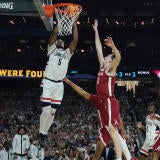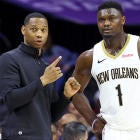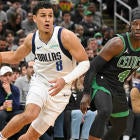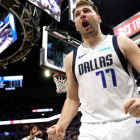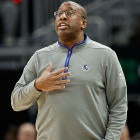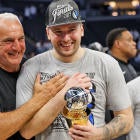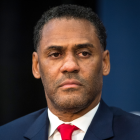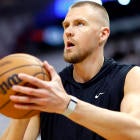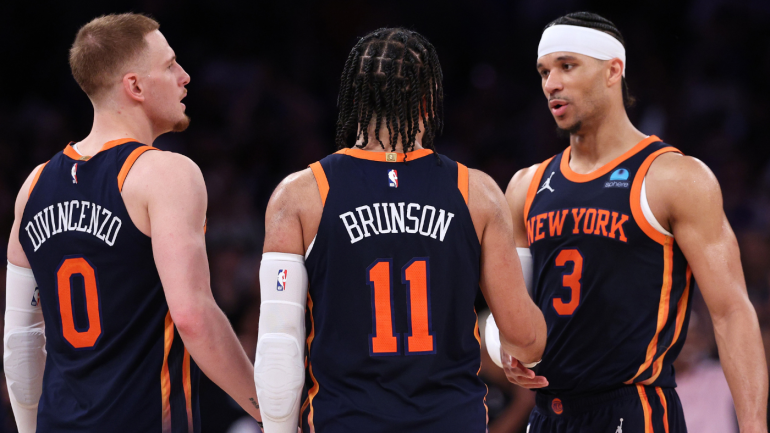
The New York Knicks may have lost their second-round series to the Indiana Pacers, but it was hardly an outcome they could have avoided given the circumstances. Julius Randle and Bojan Bogdanovic missed all seven games. Mitchell Robinson got hurt in Game 1. OG Anunoby got hurt in Game 2, though he suited up in Game 7 but was pulled after just 4 minutes of play. Josh Hart and Jalen Brunson played while injury throughout the series.
When Game 7's final buzzer sounded, it was a shell of the Knicks that earned the No. 2 seed walking off of the Madison Square Garden court. The defining feature of the series was the players New York didn't have.
There's a bitter irony to that sentiment because the players New York hasn't had on its roster have been the team's defining feature for decades. When was the last time the overarching narrative surrounding this franchise wasn't related to a superstar that never ultimately came?
The entire Leon Rose era, even after Brunson's acquisition, has felt like the build-up to a blockbuster. The Knicks have spent years hoarding picks and movable salaries hoping to trade for a fill-in-the-blank star. At times, that prospective slot was filled by talks of Donovan Mitchell. Every current and former CAA client has been on the radar at some point.
Rose's hire was only necessary because Kevin Durant spurned the prior regime. Before the Durant wild goose chase, the Knicks spent most of a decade failing to find Carmelo Anthony a suitable partner. Anthony himself was only really filling in for LeBron James, the star New York truly spent the late 2000s hoping to land.
All of the cap clearing they did to chase James was precipitated by one failed big-name acquisition after another by Isiah Thomas. Heck, the Knicks even made a failed run at Thomas' greatest on-court rival at one point. These schemes have been so convoluted that, in 1996, the Knicks attempted to lure Michael Jordan by making him the face of Sheraton hotels. (Yes, that really happened.)
It may not seem this way to the Knicks at this moment, but from that perspective, this postseason represents enormous progress. For once, the Knicks were pining after their own players instead of someone else's.
They had good reason. The sample was small, but when the Knicks were whole, they really did look like one of the best teams in the NBA. Anunoby and Randle overlapped for just 14 games, but the Knicks won 12 of them. Their starting lineup at that point in the season -- featuring Brunson, Donte DiVincenzo and Isaiah Hartenstein -- posted a +16.6 net rating. These are contender-level numbers.
There's also a layer of common sense to this. If a team makes it to Game 7 of the second round with half of its roster hurt, it stands to reason that the team must be pretty special at full strength.
If nothing else, health would have made things a whole lot easier against the Pacers. Pascal Siakam was held below 20 points in Games 1 and 2 because Anunoby was guarding him. He spearheaded Indiana's comeback in the series. The Knicks got killed during Precious Achiuwa's minutes. He's never on the court if Randle is healthy, and Robinson would have at least removed Achiuwa from backup center duties.
Brunson was spectacular for most of the postseason, and he certainly could have been even better during the latter stages of this series without an ailing foot.
The silver lining here is the valuable experience and intel gained by the Knicks from this playoff run.
Deuce McBride wasn't even in the opening night rotation. By the end of the Pacers series, he proved his playoff viability on both ends of the floor. Hart's offense was an issue last postseason because nobody respected him as a shooter. He responded this time around by not only making his playoff 3s but improving markedly as a driver and cutter in halfcourt settings. DiVincenzo's first few forays into the postseason were largely disappointing; he was stellar this time around, averaging 22.7 points per game against the Pacers.
The Knicks know what they have now: a group of players well-suited for the postseason that was missing teammates that could have taken them even further. For once, the narrative going into an offseason won't be about adding external talent to that core but rather getting all of their internal pieces back up to speed.
Doing so won't be cheap.
Right now, the Knicks have roughly $118 million in committed salary for next season if you include their two first-round picks. That figure jumps up to $135 million if one assumes they retain Bogdanovic on a non-guaranteed deal. It gets even pricier when accounting for the players that aren't under contract. With apologies to Achiuwa and Alec Burks, there are two here that matter.
It's hard to imagine the Knicks didn't have the framework for an extension in mind when they landed Anunoby, who has been somewhat-severely underpaid on his current contract. His projected max for next season is currently around $42.3 million. While he is unlikely to get that much, a new deal starting between $35 million to $40 million isn't exactly unrealistic. As big as that figure appears, it's more or less in line with what Brandon Ingram and Michael Porter Jr. are making. Anunoby holds similar value around the league given his defense. (Remember, Jerami Grant got $160 million over five years last summer. Anunoby is better.)
At least the Knicks control the Anunoby sweepstakes. They can pay him more than any other team. That isn't the case for Hartenstein. The Knicks can only offer him a 75% raise on his current salary of roughly $9.2 million. That would take him to around $16.2 million. Will that be enough to keep him in New York, even with a four-year commitment at roughly $75 million in total? It's hard to say. Hartenstein presumably wants to remain in the Big Apple, but he's made himself plenty of money with the season he just put together. Should he walk, the Knicks could try to replace him with a midlevel exception. It's hard to imagine anyone in this weak class of free agent centers able to fill his shoes.
Keep both and the Knicks are looking at a team salary above $180 million to $185 million, depending on the final numbers for Anunoby and Hartenstein. That's well above the projected luxury tax line of $172 million and potentially even within range of the projected $190 million second apron. That's not a line to be trifled with. Between trade restrictions, free agent restrictions and frozen draft picks, crossing it severely limits the ways in which a team can meaningfully upgrade its roster. You cross that line when you think you already have the players you need.
And that's where the Knicks stand at the moment. Sure, they'll look into every big name that becomes available. It would be irresponsible not to given New York's assets and desirability as a market. In a perfect world, it would at least stay below the second apron to retain some maneuverability.
But this isn't a franchise that needs to think about who it doesn't have anymore. If they had been healthy, the Knicks likely would have advanced to the Eastern Conference Finals and at least given the Celtics a competitive series. If they can just keep their current group in one piece next season, they're more than talented enough to compete for the title.








